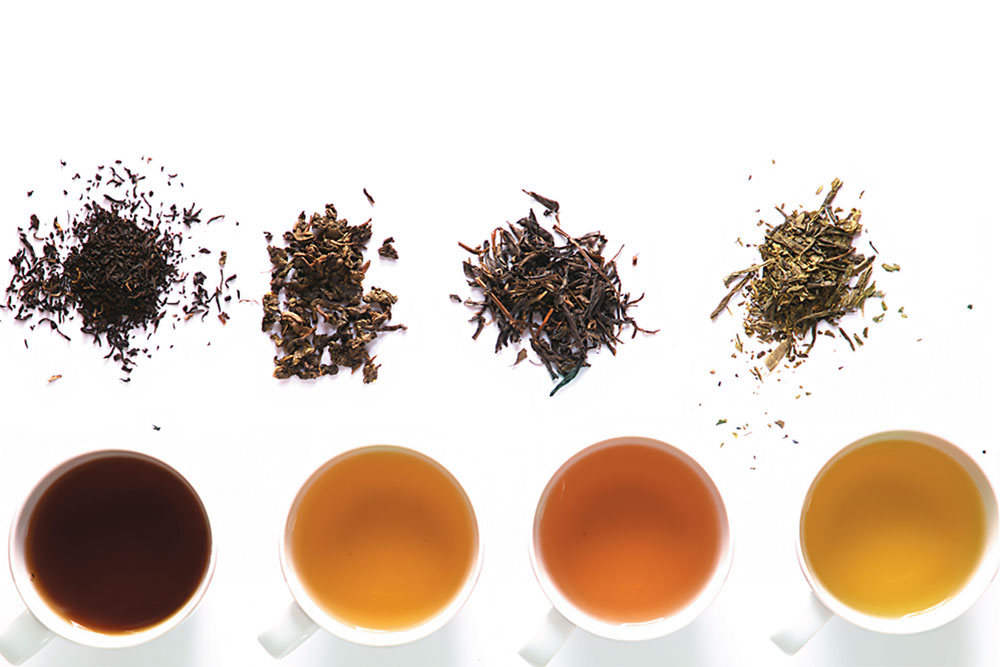Ever since it was first set up in Assam’s Nazira in 1839, the story of Indian tea has been as thrilling as France’s champagne and wine industry, linked with its own unique terroir. That romance, though, has only become evident in the decades. For most Indians, tea – when they know something about it – is limited to CTC and leaf, Assam or Nilgiri, but a new breed of tea-drinkers is treating it with the same passion as is deserving of sauvignon blanc grapes or Scotland’s highland water. Masala chai may have its devotees – make that all of India – but an evolving palate is now demanding different varieties that not only have a heritage but also specific aromas and serving traditions that pamper the connoisseur of the finer things in life.
Now, a book by photographer Rajan Kapoor and author Rekha Sarin (Chai, The Experience of Indian Tea, published by Niyogi Books, ₹2,495) translates some of that romance into a heady experience that guides you through the full-bodied liquor of the Camellia Assamica bush with its “coppery” tones and “rich and malty” flavour – terms most people associate with wine and scotch rather than our humble tea. And just like those beverages, rainfall, sun and shade are variables that affect the complexities of the leaf. Assam’s first flush, for instance, picked during early spring, results in a strong flavour that lingers long after the tea has been drunk. The second flush leaves lend a more mature and cleaner taste with a dark red infusion. And the autumnal flush comes with diluted flavours, making it ideal for blends.
Neighbouring West Bengal’s Darjeeling is India’s finest tea-growing region and its GI is part of the global lexicon. Unlike its counterparts from Assam, Darjeeling tea leaves are delicate in everything from colour to flavour to aroma. Given the long and extremely cold winter, the first flush Darjeelings are among the most highly regarded tea varieties in the world, and end up being mostly exported, while second flush Darjeeling tea is more easily found in specialty tea stores in the country. But a unique quality is its Muscatel, a tea that is plucked after green flies “bruise” the leaves, releasing an enzyme that reduces the water content in the plant, resulting in a full bouquet that monsoonal and autumnal flushes lack. Its finite quality makes it highly coveted. At Makaibari Tea Estate in Kurseong, the “white” tea is so cherished; it is the first pick among connoisseurs. Much more robust is Dooars tea that grows in the plains belt between Darjeeling and Jalpaiguri.
South Indians may prefer coffee but it isn’t for lack of choices of tea. The Nilgiri tea from Ooty and Coonoor is well known, but the hills that run from Tamil Nadu to Kerala also have tea estates in the Anamalais and Wayanad. Few associate Kerala with tea, though those of Munnar and Coorg are at least somewhat known as compared to those of Idukki and Chikmagalur. Given the tropical climate, the variations in elevation, climate and soil, Nilgiri – though that appellate is limiting – tea tends to have great variety. But northern tea varieties are even lesser known. How many even imagine that tea grows in the Kangra valley – this writer has visited estates in Dharamsala and Palampur in Himachal Pradesh.
Tea-tasters, auctions, blends…gardens, estates, planter’s bungalows, clubs – like so much else, the world of tea is an inheritance of the British Raj and is imbued with colonial tales. Tea varieties come with their own vocabulary of multiplicities of pekoe, souchong (a Chinese favourite), broken leaf, fanning and dust. As urban India converts to a discovery of green tea (with oolong and yellow tea being other choices), tea-drinking habits are changing. The formal tea tray with its pot and cosy may be part of a formal world, and the “cooked” tea that caters to mass India may be considered downmarket by the cognoscenti, but there is no one way to enjoy your tea.
Discussions about the addition of milk (cold or warm) to tea liquor now generate the same fractious debate as soda, water and ice (and exactly how much ice) in the case of whisky, with the same unhappy conclusion that taste is individual and must override convention.
As sophisticated tea drinkers replace milk with lemon or eschew any additives, even sugar, it’s time to move beyond the store-packaged teas to infusions (including those that contain no tea whatsoever) that is an acquired taste which may prove to be addictive. Sip on that while I head for my favourite – a silver needle first flush white that you won’t find in your neighbourhood store in the near future. It’s a quality that makes some a tea snob.











